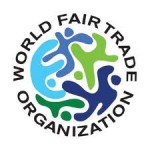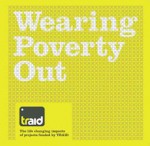Is ethical fashion gender-aware?
 Over the past two decades, the increased awareness of gender within government and other organisations has helped move towards a fairer world, but we all know that there is still a big step to make before we can claim equality between men and women. Ethical Fashion enables us to look at the ways in which people, throughout the production and distribution process are being treated. In addition, it gives us an insight into what the conditions of work are, and how people may have different experiences due to their gender. Hence, being gender-aware means that both women’s and men’s interests are taken into account and that they both benefit equally from a company’s resources and benefits. This article looks at ways in which sustainable fashion may be more gender-aware due to its ways of trading, and more likely to lead to sustainable development.
Over the past two decades, the increased awareness of gender within government and other organisations has helped move towards a fairer world, but we all know that there is still a big step to make before we can claim equality between men and women. Ethical Fashion enables us to look at the ways in which people, throughout the production and distribution process are being treated. In addition, it gives us an insight into what the conditions of work are, and how people may have different experiences due to their gender. Hence, being gender-aware means that both women’s and men’s interests are taken into account and that they both benefit equally from a company’s resources and benefits. This article looks at ways in which sustainable fashion may be more gender-aware due to its ways of trading, and more likely to lead to sustainable development.
Despite the key roles women play throughout the process of production and consumption of fashion, they are often disadvantaged and undervalued by trade policies (a government’s policy controlling foreign trade) . Trade policies and agreements are often assumed to be gender neutral. Yet, through many instances, the opposite has been proven. Gender neutral policies do not look at the different experiences men and women may have, not only due to their gender, but also due the interaction of gender with other social relations, such as social class, race, caste, generation, ethnicity, religion, and so, which may contribute to one’s subordination. The interaction of two or more social relation manifests discrimination between and among men and women. Inequalities within social relations put women at a subordinated position, and the fashion industry has not made an exception.
According to Zo Randriamaro (2006: 8,) ethical trade ‘promotes the interest of the producers. It recognises the importance of better integrating primary or local producers into international markets, but sees that an unregulated market is unlikely to distribute the benefits of the trade equally among all those involved in production. It therefore advocated policies in which those who end up getting poor remuneration for their products are able to claim a greater share in the end sale price.’ Ethical trade would lead to sustainable development, and both men and women who contribute to the production of our clothes would beneficiate from it by working for fair wages, but also by working in compliance with the World Fair Trade Organisation’s ten principles of trading (http://www.wfto.com/index.php?option=com_content&task=view&id=2&Itemid=14).

Worldwide, there is an estimated 40 million people involved in the global textile chain among which women represent a large percentage. Although we need to take into account that there are significant variances depending on the context, women are often more likely to be discriminated, considered as cheap and flexible labour, and exposed to health and safety risks. Moreover, women who, in many countries, are less educated than men, have fewer opportunities to ‘walk up the ladder’ due to their lack of qualification and training. Hence not only men are more likely to have higher positions than women, but also higher wages.
However, it has been academically acknowledged that women are more likely than men to spend their money on children’s education, health, and improving their household. Also, earning their own money gives women greater bargaining power within the household, and may result in greater involvement in decision making, reduce violence and so on. In addition, giving people fair wages for the work provided enables them not only to make a better living but also to reinvest more in their business.
In order to bring sustainable development in poorer countries, there is therefore a need to involve women in the process as well as men. The United Nations’ International Trade Centre (ITC) has developed the Ethical Fashion Initiative which aims to use fashion as a tool to bring sustainable development. Of course it is one among many tools, but it will help to reach a large amount of world citizens who work in the fashion industry.
![]()
Brands such, as the Belgian brand JnJoy (www.jn-joy.com) not only use sustainable textiles, chemical-free dyes and ensure they work with factories that pay fair wages but also support poorer communities by supporting a charity that helps Indian children to have a better life.
 Another example is TRAID (www.traid.org.uk), which raises funds to fight global poverty and injustice through its clothes recycling, charity retail and environmental activities in the UK. So far £2.5 million have been raised to support projects improving the lives, environment and wages of people working in the global textile supply chain. Many of these projects have targeted women and children throughout Asia and Africa.
Another example is TRAID (www.traid.org.uk), which raises funds to fight global poverty and injustice through its clothes recycling, charity retail and environmental activities in the UK. So far £2.5 million have been raised to support projects improving the lives, environment and wages of people working in the global textile supply chain. Many of these projects have targeted women and children throughout Asia and Africa.
Although ethical trade doesn’t have a particular gender approach, by its ethics, it becomes more gender-aware. By using organic cotton and chemical-free dyes that won’t put farmers and producers health at stake and ensuring the factories they work with are compliant with the WFTO fair trade principles, fashion companies can start reversing the trends, but it is also up to us, as consumers, to shop ethically and contribute to improving the lives of many in the supply chains.
Article by: Cindy S. KUYLLE
Bibliography:
Randriamaro, Z. (2006) Gender and Trade: Overview Report. Bridge. Available from: http://www.bridge.ids.ac.uk/reports/CEP-Trade-OR.pdf [Assessed 7th March 2012]
Women
A wide selection of stylish fashion clothing for all occasions including: dresses, tops, knitwear, skirts, eveningwear, coats, suits, jackets and more. Styles to suit a variety of tastes from classic to vintage and more in between: recycled and upcycled. This is sustainable ethical fashion at it's best.
Women's Ethical ClothingMen
If you're looking for something eco or ethical to wear for dress down friday, a casual weekend or holiday, you'll find it here. Tops, t-shirts, jeans, trousers from mainly fairtrade and organic cotton.
Men's Ethical FashionKids
Green fashion for kids is fun and made mainly from natural fibres including organic cotton and Fairtrade cotton. From baby to early teens, there's something to make all kids happy. Bright colours, animals, fun shapes that children can wear all year round.
Kids Green ClothingAccessories
A treasure trove of accessories from around the world can be found here. A vast selection of jewellery including necklaces, bracelets, rings and earrings to shoes, hats, bags, handbags and scarves. Whatever your style, these items will complete any outfit.
Eco-Friendly Accessories





Comments are closed.